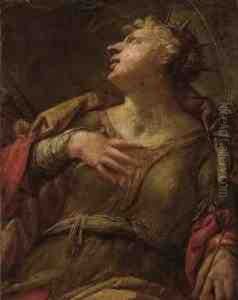Petro Marco Vitali Paintings
Petro Marco Vitali was an Italian painter born in 1644 in Rome, Italy. His work primarily belongs to the Baroque period, a time characterized by dramatic expression, deep color, and intense light and shadow contrasts. Vitali’s contributions to art are often overshadowed by his contemporaries, yet his work holds a significant place in the development of Italian Baroque painting.
Vitali's early years were spent training under the guidance of prominent artists in Rome, where he developed a firm foundation in the techniques and styles that defined the Baroque movement. His paintings often depicted religious themes, a common subject matter of the time, imbued with emotional depth and a keen attention to detail.
Throughout his career, Vitali received commissions from various churches and patrons in Rome, which helped establish his reputation as a skilled painter. His works are noted for their vivid portrayal of biblical stories and characters, brought to life with a dynamic use of light and shadow. This technique, known as chiaroscuro, became a hallmark of his artistic style and contributed to the overall drama and intensity of his paintings.
Despite his talent and contributions to the Baroque movement, Vitali's work was somewhat eclipsed by the more famous artists of his era, such as Caravaggio and Bernini. However, his paintings continue to be appreciated for their beauty and technical skill, and they offer valuable insights into the religious and cultural contexts of 17th-century Italy.
Petro Marco Vitali passed away in 1720 in Rome. Today, his work can be found in various museums and collections, serving as a testament to his artistic legacy and the enduring appeal of Baroque art. His contributions, though not as widely recognized as some of his peers, remain an important part of the rich tapestry of Italian art history.
